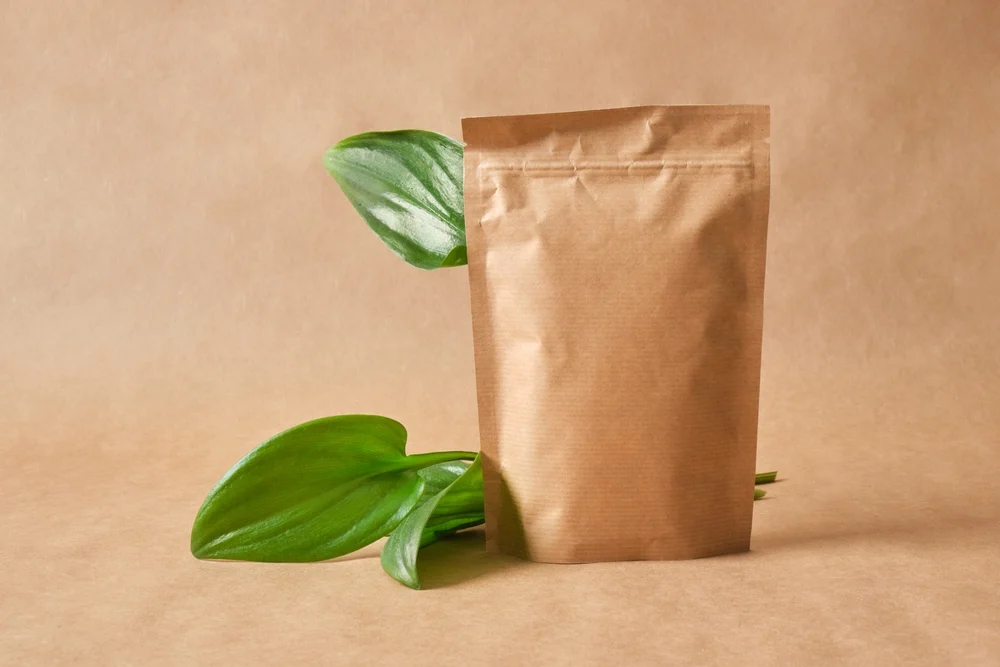In the fast-paced world of frozen food, packaging plays a...
Read MoreThe Green Revolution: A Guide to Sustainable Packaging

In the contemporary landscape of business, sustainability stands as a paramount concern for enterprises spanning various sectors. As consumers become increasingly environmentally conscious, there’s a growing demand for sustainable packaging solutions that minimize environmental impact while still meeting product protection and branding needs. This blog will delve into the green revolution in packaging, exploring the principles of sustainable packaging, the benefits it offers, and practical steps businesses can take to adopt sustainable packaging practices.
The Importance of Sustainable Packaging:
Sustainable packaging refers to the use of materials and design strategies that minimize environmental impact throughout the lifecycle of a product. It aims to reduce waste, conserve resources, and lower carbon emissions associated with packaging production, distribution, use, and disposal. The importance of sustainable packaging cannot be overstated, as it addresses critical environmental challenges such as plastic pollution, deforestation, and climate change.
Benefits of Sustainable Packaging:
Environmental Preservation:
Sustainable packaging reduces reliance on non-renewable resources and minimizes pollution, helping to preserve ecosystems and biodiversity.
Waste Reduction:
By using recyclable, compostable, or biodegradable materials, sustainable packaging reduces the amount of waste sent to landfills and incinerators.
Cost Savings:
Although initial investments in sustainable packaging may be higher, businesses can realize long-term cost savings through reduced material usage, transportation costs, and waste management expenses.
Brand Reputation:
Embracing sustainable packaging practices enhances brand reputation and credibility, appealing to environmentally conscious consumers and attracting new market segments.
Regulatory Compliance:
With increasing regulations on packaging waste and environmental impact, adopting sustainable packaging ensures compliance with current and future legislation, mitigating legal risks.
Principles of Sustainable Packaging:
To achieve sustainability in packaging, businesses should adhere to the following principles:
- Source Responsibly: Choose materials that are renewable, recycled, or biodegradable, and prioritize suppliers with sustainable practices.
- Reduce and Optimize: Minimize packaging materials and optimize packaging design to maximize efficiency and minimize environmental impact.
- Reuse and Recycle: Design packaging for reuse or recycling, and educate consumers on proper disposal practices to promote circularity.
- Innovate and Educate: Embrace innovation in materials, design, and production processes, and educate stakeholders on the benefits of sustainable packaging.
- Collaborate and Advocate: Collaborate with industry partners, NGOs, and government agencies to drive collective action on sustainable packaging, and advocate for policies that support sustainability.
Practical Steps to Adopt Sustainable Packaging:
- Conduct a Packaging Audit: Assess current packaging practices and identify opportunities for improvement, including material selection, design optimization, and waste reduction.
- Explore Sustainable Materials: Research and test alternative materials such as recycled paper, compostable plastics, and bio-based polymers to find the best fit for your products.
- Design for Sustainability: Consider factors such as material efficiency, recyclability, and end-of-life options when designing packaging, and prioritize simplicity and functionality.
- Engage Suppliers and Partners: Collaborate with suppliers and packaging partners to align on sustainability goals, share best practices, and explore innovative solutions.
- Communicate with Consumers: Transparently communicate your commitment to sustainability through packaging labels, marketing materials, and online channels, and educate consumers on how they can participate in recycling and waste reduction efforts.
Case Studies:
- Patagonia: Known for its commitment to environmental stewardship, outdoor apparel brand Patagonia has embraced sustainable packaging practices, using recycled and recyclable materials for its clothing and gear packaging.
- Loop: Loop is a global shopping platform that offers reusable packaging solutions for everyday products, partnering with leading brands to eliminate single-use packaging and promote circular economy principles.
Conclusion:
The green revolution in packaging is underway, driven by the urgent need to address environmental challenges and meet consumer expectations for sustainable products. By adopting sustainable packaging practices, businesses can not only reduce their environmental footprint but also unlock new opportunities for innovation, cost savings, and brand differentiation. Embracing sustainability is not just a trend; it’s a necessary step toward building a more resilient and regenerative future for generations to come. Join the green revolution in packaging and be a catalyst for positive change in the industry.
Tailored Solutions: Packaging Innovations for Agrochemical Products
In the agricultural sector, packaging for agrochemical products plays a...
Read MoreTailored Solutions: Packaging Innovations for Food Products
Packaging plays a pivotal role in the food industry, serving...
Read More

